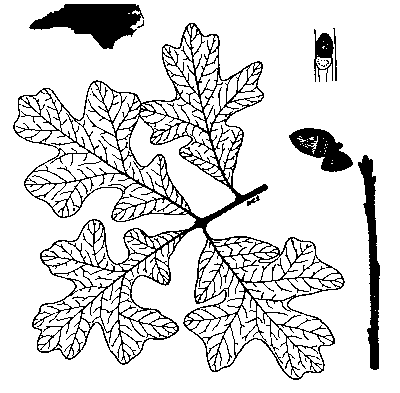|
Post
Oak
(Quercus
stellata Wangenh.)
|
|
| |
 |
|
| |
Post
oak can be found throughout the state. While it will grow in the
mountains at elevations as high as 2,500 feet, it is most abundant
on the poorer and drier soils of the Piedmont. It grows slowly
and commonly reaches a height of 40 to 50 feet and a diameter
of 1 to 2 feet.
Its leaves are 4 to 6 inches long and are deeply divided into
five lobes by broad sinuses. The central-lateral lobes are roughly
square on the ends, giving the leaf a cross-like appearance. The
oval acorn, 1/2 to 3/4 inch long, is about one-third covered by
the bowl- a saucer-shaped scaly cup.
Post oak bark is rougher and darker than the white oak and is
broken into much smaller scales. Horizontal cross-breaks in the
ridges of the trunk's bark are a characteristic of this tree.
Post oak often has stout branches that spread to form a dense,
round-topped crown. The branches and upper stem often are twisted
and gnarled. The heartwood is very heavy, hard, close-grained
and is resistant to decay. Because it is one of the white oaks,
post oak lumber is sold and used the same way as white oak is.
|
|
|

